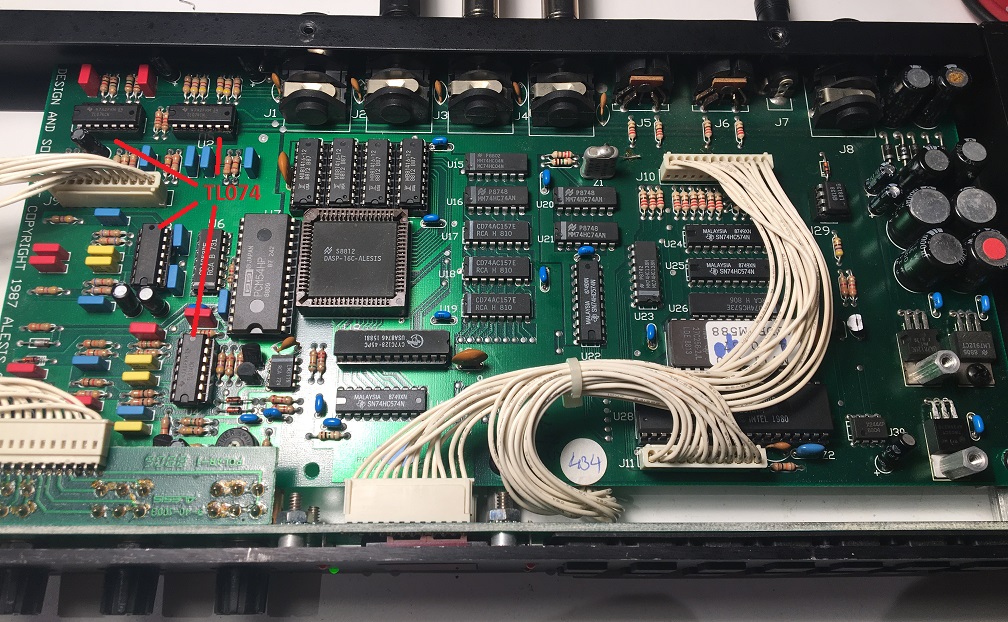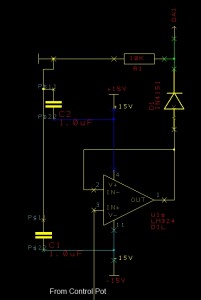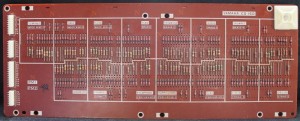I´ve had a broken Alesis Midiverb II lying around for quite some time now. Just recently I remembered that I´ve always liked Patch #28, even before I dove into ambient and drone. So I thought now was finally the time to open it up and give it a go, especially since not to long ago I aquired a Midiverb 4 from an old friend and thus had a working 9V AC/AC adaptor again which the Midiverb II also requires.
Symptoms
You´d plug in the power adaptor and nothing would happen, neither visually nor sonically. The unit was basically dead, or so it seemed …
Fault trackdown
It´s always a good start to make sure that all the supply voltages are there and within range. The Midiverbs rectify internally so I started at the power adaptor plug and made my way through the PSU unit. Power on all paths was present but at very low ratings. I unplugged it again and did some continuity measurements. I found a short circuit between the output and ground of the 7805 regulator. I took it out and found that it measured okay out of circuit so it itself couldn´t be the problem. I still had to replace it because the input leg simply broke with no real force applied,
The repair
So there was a short circuit on the 5V supply line. I measured continuity across all capacitors and marked al those that seemed short which I then soldered out. Basically I removed all ripple filter caps of the digital ICs. Subsequently I no longer measured a short circuit across the 7805. It turned out that two of the filter caps had shortened. I replaced those with 470pF that I had left over from the Opra 6 repair and put all the other working ones back in.
That was all it needed. Plugged in the adaptor and there it was up and running again.
Improvement
I noticed that the unit emitted a slight humn and a significant amount of noise when cranked up fully. I then remebered that the device has always been a little noisy. I realized that it might be a good idea to check whether the analog circuit could be improved upon. All opamps where LF347 and a little research revealed that the TL074 is compatibel and seemed to have better ratings. So I decided to replace all LF347 with TL074. I used sockets just in case that I where proven wrong and had to reverse it, which didn´t happen. I am quite stisfied with the improvement and really happy to have the unit back in working condition.



